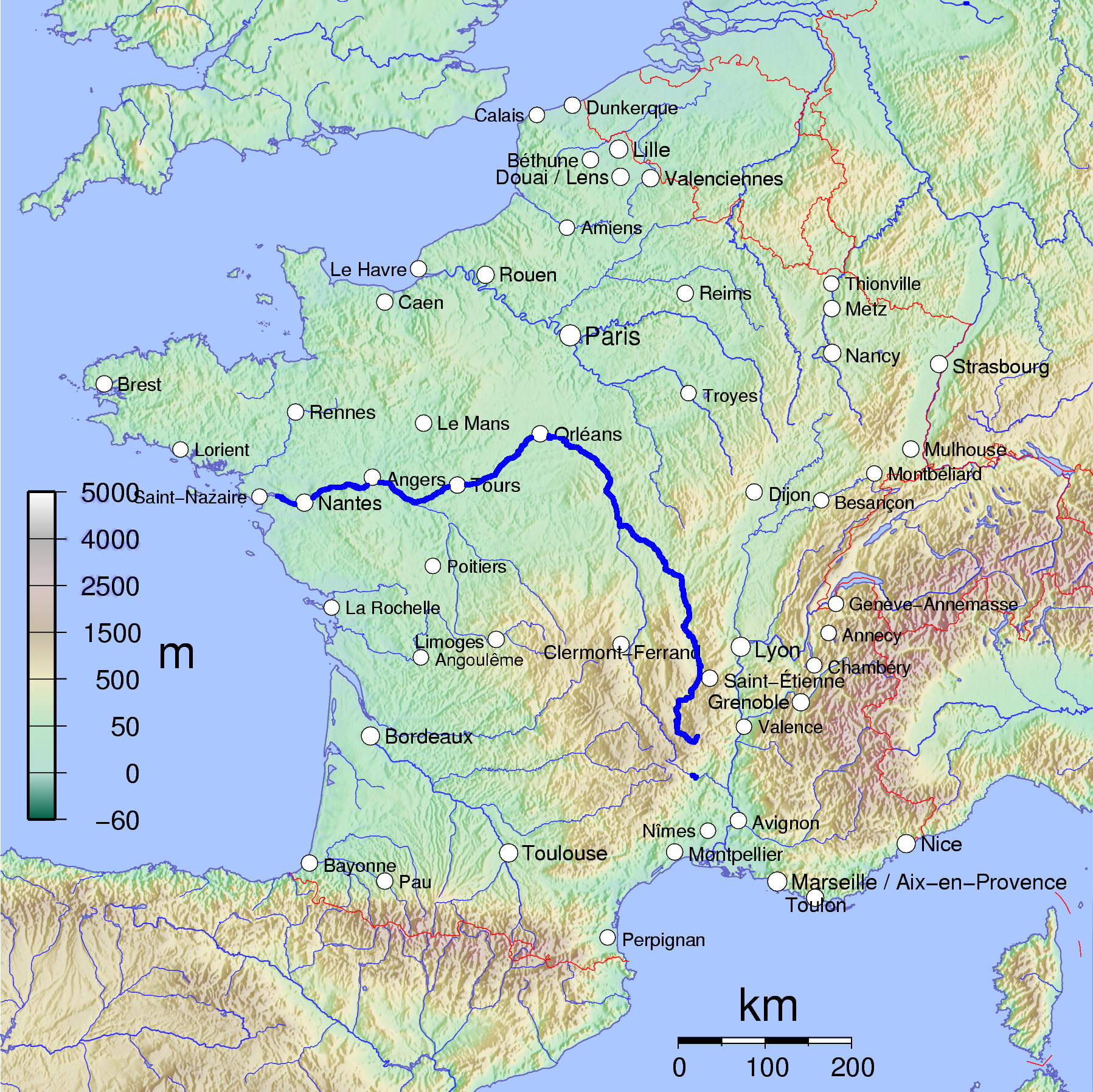 |
| Here be the Loire! |
Thursday, June 28, 2012
L is for Loire
Thursday, September 22, 2011
The Alphabet Soup Project – I is for “Inspiration”
Hope folks didn’t mind bit of a pause while the Sweet Partner in Crime and I were vacationing (well, I was – she had to work for a few days...) in Amsterdam. If you’d like to take a gander at our pictures...
Like my travels, one of my great wine tasting joys is discovery. That’s the kind of experience that made me start writing this crazy thing to begin with. This bolt from the blue can take lots of different forms. I might be impressed by someone’s advice on a wine; I could find a random pairing that works; or I could run into into something unexpected. Let me share a few of those fun times with you…
My newly-certified sommelier buddy James V. turned me on to the Domaine Sautereau Sancerre. This is a French sauvignon blanc from the eastern part of the Loire. He gave it two thumbs up and I trust his palate, so I gave it a run. This is simply a pretty smelling wine. "Flowering cantaloupe" was my first thought. Yes, I know – that’s an odd description, but I like it better than "floral with melon undertones." The flavor was intriguing. Like most Sancerre, this is a light bodied, acidic, minerally wine. This one, however, had a wonderfully balanced creaminess that I had never tasted before in one of these wines. Made me light right up.
When James first tried this wine, he had the good fortune to visit the property. He told me that they served it with chevre (goat cheese) and hard salami on crackers, so I tried to duplicate the experience. I was initially a bit skeptical. With the cheese alone, the wine developed an odd flavor, but adding the crackers and meat -- unearthly good as a pairing. I experimented by replacing the water crackers with a rosemary-flavored Triscuit -- and it turned into one of the best "appetizer pairings” I’ve had. The wine is into the 2010 vintage now. It’s $22 from Bond Street Wines (http://www.bondstreetwines.com), and I highly recommend it.
Another day, the Sweet Partner in Crime and I cooked up a pot of turkey chili, which was an interesting concoction. I ran out of cumin, one of my base spices, so I substituted garam masala, an Indian spice blend, and a little bit of coffee. (Rule of good chili: Just keep throwing things in until it tastes right.)
With this amalgamation. we were at a loss for a wine. After reviewing our on-hand options, I rolled the dice and cracked the Bodegas Salentein Killka Collection 2008 Malbec – a $12 Argentinean number I’d picked up on a whim. I love it when a plan comes together. The Killka turned out to be a fruity, fairly complex wine that went down nicely on its own. It had plenty of blackberry and vanilla to start, and its flavor stays quite smooth throughout. There’s that yummy smoky quality a good malbec has, but it lingers in the background and stays subtle on the finish – a finish with a good, firm fruity flavor and enough tannin to be interesting.
Alongside the chili, the malbec’s tannins worked nicely with the spices, revealing some very interesting complementary flavors. The Indian spices deepened and the chili powder had a “fuller” flavor. Also, since tannin is an acid and capsaicin (the molecule that makes chili hot) is a base, the malbec tamed the fire a bit. I don’t know if I could duplicate it, but we sure liked it.
Trips to the wine store occasionally shoot a bolt of inspiration. K2, one of my wine pals, recommended the Highflyer 2009 Grenache Blanc, saying it was his “favorite white wine of the moment.” The Highflyer is a Napa Valley creation. I don’t think I’d ever tried a white Grenache that didn’t come from the Rhone or Spain, so I was, on one hand, really looking forward to the experience . That said, I was also somewhat wary of a white wine from Napa, since I’m not usually a big fan. I had the heavy oak and heavy butter of Napa chardonnay in my head, but I was trusting. I poured and swirled. Bottom line? It’s a tasty, tasty bottle. My first reaction was, “This is California chardonnay, dialed way back.” Sure, there’s oak and butter, but that’s nicely balanced with some prominent pear and berry flavors. The body is medium with am evenness of oak and pear. The finish is oaky and softly lasting. Very enjoyable. It also turned out to be a killer choice with some spice rubbed, grilled chicken breasts and a green bean salad. The Highflyer will run you around $20, but it’s worth it.
Every once in awhile, I even get a little twinkle of inspiration from something utterly mundane. It’s not always tasting central around Vine HQ. Sometimes, one of us just needs a glass of wine to throw down without thinking. We usually have a box of white wine lingering in the fridge for just such a purpose. I’d snagged Big House Wines “The Birdman” Pinot Grigio at around $18 for 3 liters. I was aware of Big House red & white, but I hadn’t tried one of their “single varietals” before. In past experiences, box pinot grigio is normally one step above flavored water. The Birdman was a very pleasant find. (Somewhere, Chris Anderson is smiling…) Light and pleasant with actual structure in its pear and lime flavors, it’s a simple, easy quaffer that’s certainly not the flabby, watery mess you might expect. For a box wine, that’s pretty much all you can ask for.



